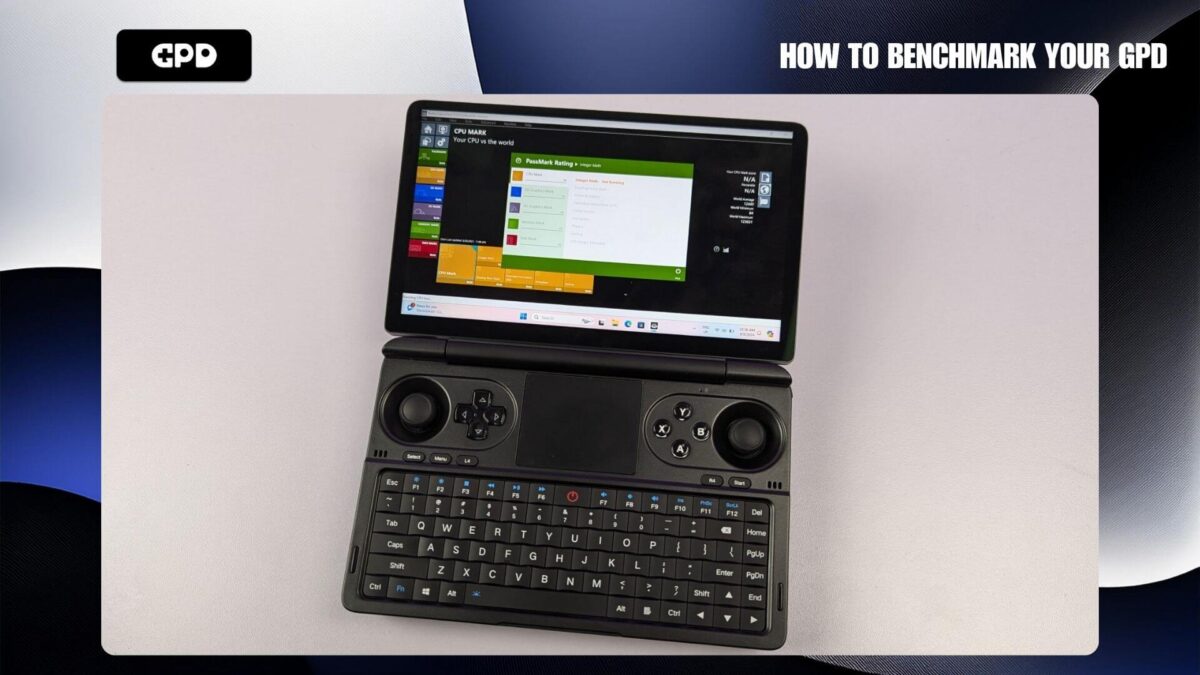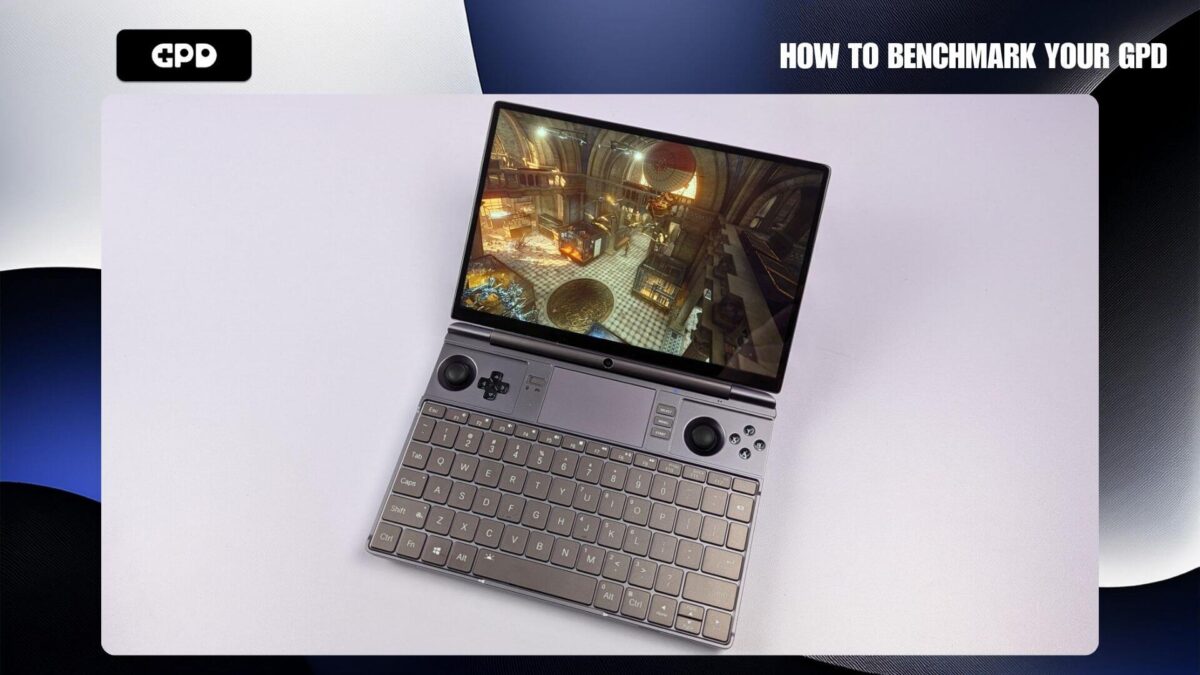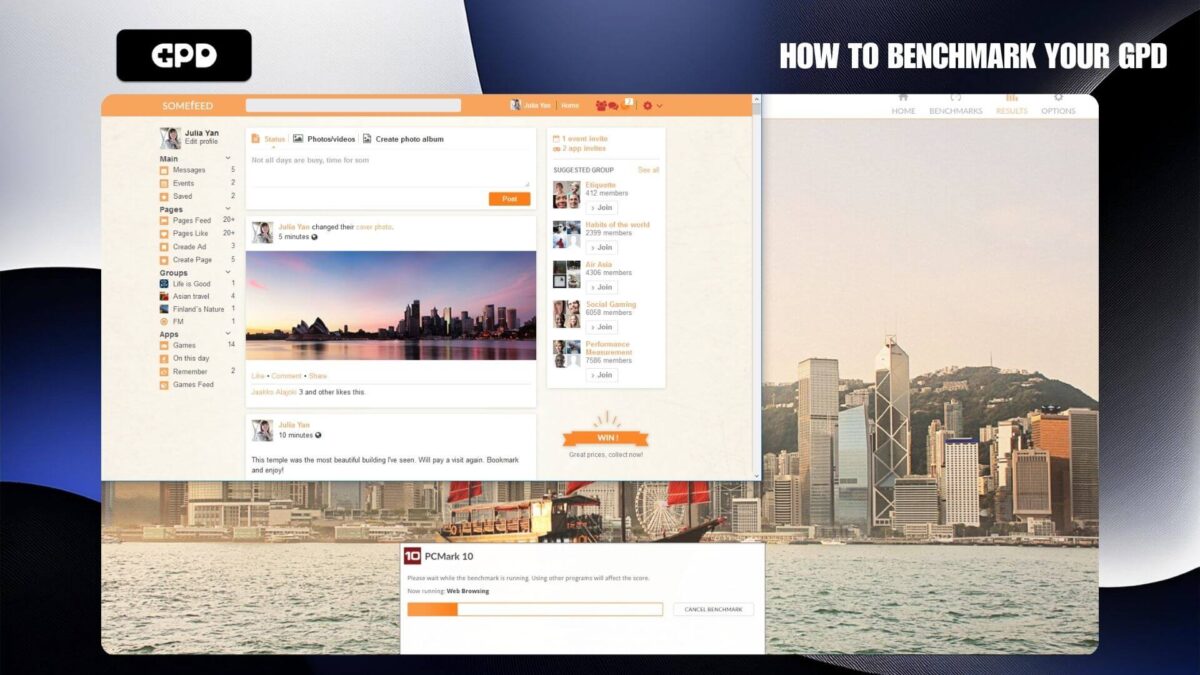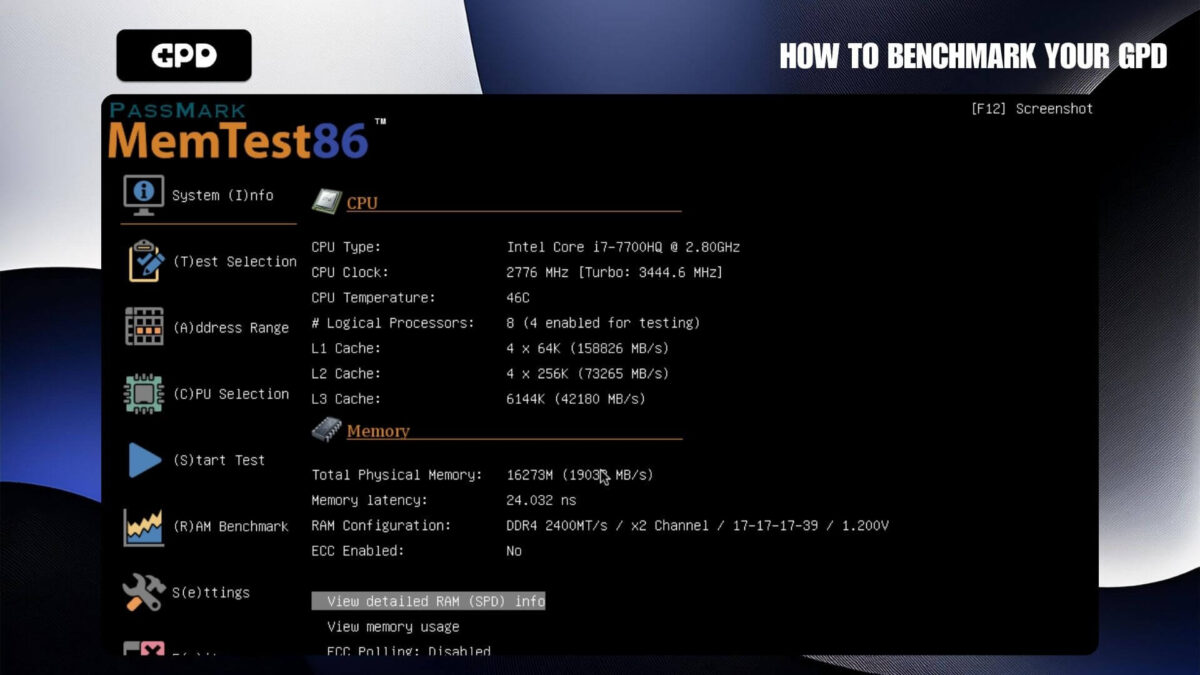In this detailed guide, we will walk you through the essentials of performance testing: what it involves, how to prepare for it, the various tools available, including our top recommendations, and how to perform these tests effectively. This how to benchmark your GPD guide applies to all Windows devices, including PCs, Mini PCs, GPD mini laptops, and GPD handheld gaming PCs.
What is Benchmarking? #
Benchmarking is about pushing your computer to its limits to ensure it can handle demanding tasks. Essentially, it’s like giving your mobile gaming PC an intense workout to see how well it performs when under significant load. By placing the system under stress, far more than what it typically experiences in everyday use, we can identify both its strongest and weakest points. This process helps you prevent potential future issues and ensures your system remains reliable, particularly for heavy-duty applications or when determining the capabilities of your device.

Whether you are a gamer striving for peak performance, a professional managing resource-heavy tasks, or simply someone who wants to ensure their system is reliable, understanding this process is essential for maintaining a robust and dependable computer.
Preparation #
To ensure the accuracy of your performance test results, it’s important to minimize any external factors that could influence the benchmark outcomes. Establishing a baseline with controlled variables is key, and the best way to achieve this is by ensuring that all your firmware and drivers are up to date. Follow these preparatory steps for optimal results.
Update BIOS Version #
Your BIOS (Basic Input/Output System) or UEFI system is the core of your device. Keeping your BIOS up to date often resolves issues and enhances performance, stability, and compatibility. However, be cautious—only install stable BIOS updates, as an incorrect or unstable update can lead to serious problems.
For guidance on updating your BIOS, refer to our Getting Started guides tailored to your specific handheld gaming computer or compact laptop.

Update Windows #
Next, make sure your Operating System is updated to the latest version. Windows updates often include fixes for bugs and issues that can affect system stability. To update Windows, simply navigate to the Windows Update tab in Settings, or refer to our How-To guide for further instructions.
Update Drivers #
Ensure that all your ultra-portable notebook and portable gaming computer drivers are updated to the latest versions. These drivers are essential for your system’s hardware components, such as the GPU, chipset, network, and sound card, to function correctly. Installing the latest driver revisions improves the stability and performance of these components. The CPU and GPU play critical roles in system performance, so having the most recent drivers for these is crucial for accurate stress test results.
You can consult our Knowledge Base Getting Started guides for your device to locate the necessary driver updates.
Scan for Malware #
For added security, it’s a good idea to perform a full system scan using a reliable antivirus program like Microsoft Defender or Bitdefender. Ensuring that your system is free from malware is crucial, as malware can skew benchmark results and lead to inaccurate conclusions about your system’s performance. A clean system will provide a true baseline for performance testing.
Restart Your Device #
Restarting your PC helps clear background processes and removes temporary files accumulated during use. This step also ensures that any firmware or software updates are fully installed. By restarting, you ensure that your system has a fresh, consistent starting point for the tests, with all available memory and completed updates.
Close all unnecessary software before running to ensure the tests are accurate and consistent.
General Tests #
PCMark #

PCMark is a widely recognized industry standard for benchmarking overall PC performance. We recommend this benchmark because it evaluates tasks that reflect everyday use, such as working with large office documents, media playback, image and video rendering, and more. Much like its counterpart for graphics rendering, 3DMark, PCMark not only provides a detailed breakdown of your test results but also compares your performance against similar devices and hardware, giving you a comprehensive yet easy-to-understand analysis of your system’s capabilities.
PassMark #
PassMark is an excellent alternative for those looking to stress test multiple components simultaneously, including the CPU, GPU, RAM, and storage. This benchmark offers flexibility, allowing you to either run tests as a whole or focus on individual components if you prefer to stress-test a specific area of your system.
CPU & GPU Tests #
3DMark #

3DMark is one of the most popular benchmarks for stress testing CPUs and GPUs, especially for portable gaming PCs. It is considered the industry standard for measuring graphics performance. A free version is available, and a paid upgrade offers additional benchmarks. Like PCMark, 3DMark provides detailed yet easy-to-understand benchmark scores and comparisons, helping you ensure that your device is performing as expected.
CPU-Only Tests #
Cinebench #
Cinebench is a highly recommended tool for CPU benchmarking, using Cinema4D’s rendering engine. It is simple to set up, requiring minimal configuration. You can choose to run either single-core or multi-core tests, both of which take about ten minutes to complete.
Prime95 #
Prime95 is another excellent option for CPU testing, particularly useful when experimenting with different settings to push your processor to its limits.
GPU-Only Tests #
FurMark #
FurMark is a top choice for GPU stress testing and benchmarking on Windows devices. This free and lightweight tool performs intense graphics card tests. It is our recommended option, though there are plenty of alternatives available if needed.
Memory-Only Tests #
MemTest86 #

MemTest86 is the original and still the best benchmark tool for memory diagnostics. It requires creating a bootable USB drive to run the software, but it’s well worth the effort if you want a reliable and accurate test of your RAM.
Storage-Only Tests #
CrystalDiskMark #
CrystalDiskMark is an easy-to-use, free tool for testing the performance of your SSD. It runs multiple tests to measure both the read and write speeds of your storage device, providing a clear picture of its performance.
These benchmarks and checks are designed to ensure your device is functioning as expected and to help identify any potential issues early on. If you experience any problems or have questions, don’t hesitate to contact GPD Store support.
